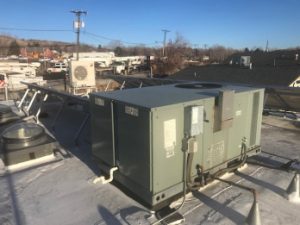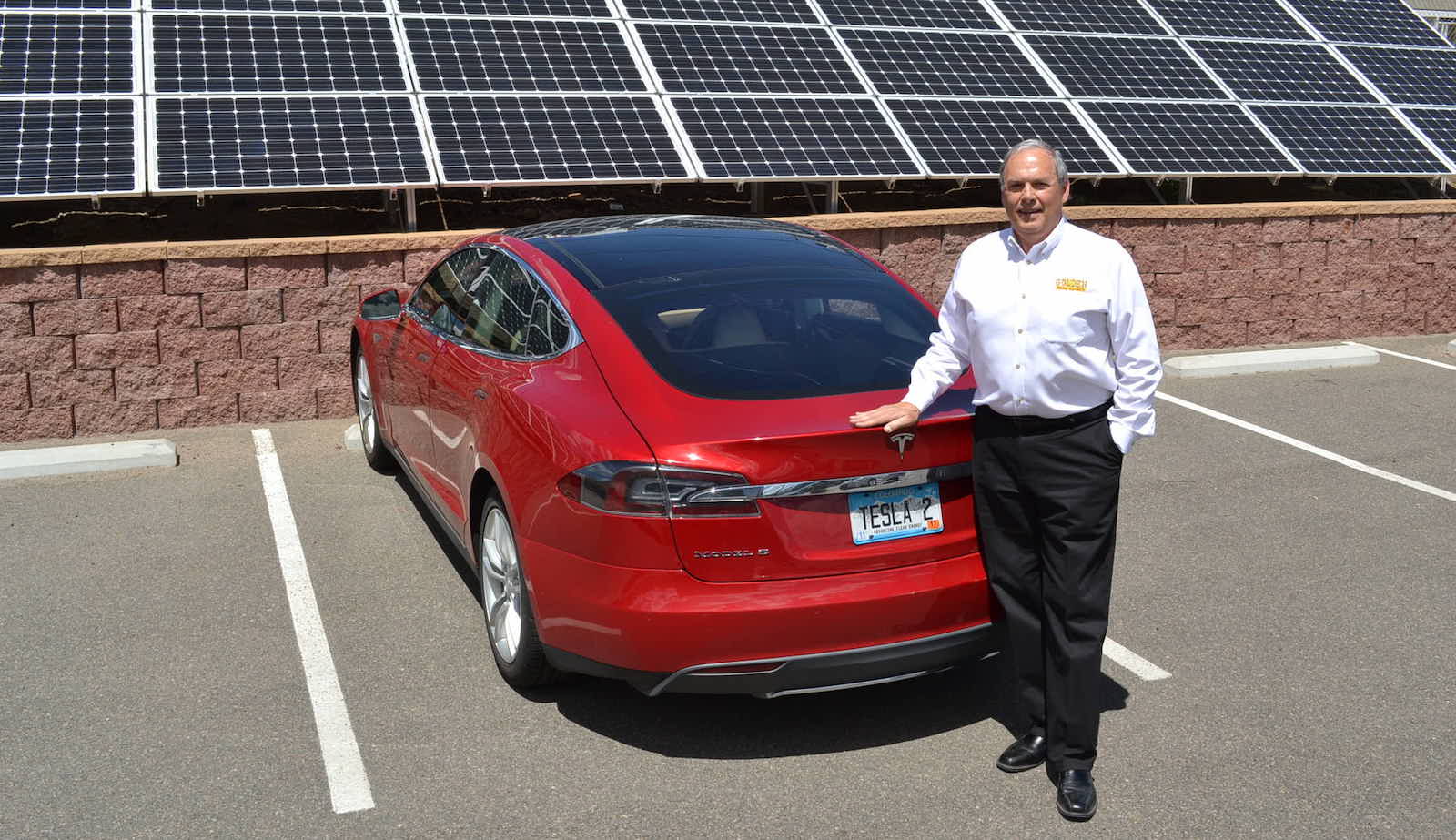The phrase “promoting and modeling environmental responsibility” is one of the value statements that appear on all of Golden Real Estate’s yard signs. One of the ways in which we model environmental responsibility is in the efficient use of energy at our office.
Our first action towards our mission was to install 5 kW of solar photovoltaic (PV) panels on the roof of our office. Then, in 2012, we purchased our first electric car, a Chevy Volt. In 2014 we purchased our first Tesla. That led to the installation of another 5 kW of solar PV at the rear of our parking lot, followed by another 10 kW to support the free charging stations we had installed in our parking lot. In our office, we installed four Velux sun tunnels, which draw natural sunlight into our office, reducing our electrical consumption. And, we super-insulated our building to reduce the amount of natural gas required to heat it.
It was only a matter of time before we stopped burning natural gas altogether. We had a heat pump (called a “mini-split”) system installed, replacing the large natural gas furnace-A/C unit (pictured on our roof) which had effectively heated and cooled our office for many years, but which gave us a natural gas bill as high as $175 per month in the winter.
Following the installation of the mini-split system in late November, we had Xcel Energy remove our gas meter. As a result, our December 2017 Xcel Energy bill was just $11.79 – which is the the monthly administrative fee Xcel charges to be connected to their electric grid. That bill (and bills of the foreseeable future) reflects zero kilowatt-hours purchased from Xcel. This allows our connection to Xcel to function as our “battery.” We send excess solar-generated electricity to Xcel when the sun is shining, then draw it back when needed. This process, called net metering, enables us to power our office – including heating and cooling – and charge our electric cars and those of our visitors, without buying any electricity from Xcel.
Mini-split heat pumps are commonly used in other countries for the heating and cooling of homes and businesses and they’re beginning to gain traction in the United States because of their efficient use of electricity. Bill Lucas-Brown of GB3 Energy, the company that installed our system, believes that mini-splits are the future – so much so that they are the only heating and cooling systems he’s installing nowadays. Bill installed what he considers the best system on the market, one made by Mitsubishi. It utilizes a single condenser unit that powers three wall-mounted interior units. It is so efficient, we just leave the wall units set at 70 degrees day and night. It’s also an intelligent system, in that it can sense where people are and direct warm air (or cool air as needed) toward them.
Mini-splits are also ductless. A mini-split condenser can support multiple wall units and, in our application, the lines from one roof-mounted unit run across our roof to the location of the three wall units mounted at ceiling height. This allowed us to remove the ducts hanging from our office ceiling which makes the office feel bigger and brighter.

A small, mini-split heat pump replaced the much larger rooftop gas furnace/air-conditioner seen in the foreground.
We left the 30-year-old furnace and A/C unit on the roof, saving the cost of removing it by crane. As you can see in the photo, the condenser unit, which feeds all three wall units, is quite small – even smaller than the A/C compressor sitting outside a typical home. It’s also much quieter.
It’s easy to install a mini-split in an existing building. You’ll see one or more ground-mounted condenser units, with coils running along the bottom of the exterior walls and then up the walls to where the interior wall units are positioned. Our system is similar except that our condenser unit is on the roof, which keeps both it and the lines to the three wall units out of sight. The improved comfort level, accomplished with minimal noise and without obvious air flow, was immediately noticeable by our agents and visitors alike.
So, what’s next at Golden Real Estate? It would be hard to improve upon the energy efficiency of our office, so our next move will likely be to replace our gasoline-burning 2004 box truck, with an electric box truck. Electric box trucks are being manufactured in other countries and are expected to be widely available in the U.S. within the next few years. It was with that intention that we installed two EV charging stations in our truck parking area. Currently, clients and non-profits who borrow our trucks at no cost are still asked to replace the gasoline they burn, but when they borrow our new electric truck, refueling won’t be necessary. They will simply plug it in when they return it.
Ultimately, I hope that our example will inspire other Realtors® and businesses to move their buildings and transportation onto the path to zero so they too can promote and model environmental responsibility.
Jim Smith is a top-producing Realtor in Golden, Colorado.

